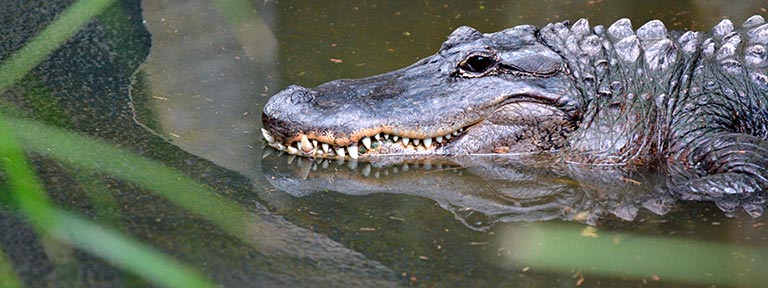Travel experiences
Where to see Australian wildlife
7th April, 2019
When you think of Australian wildlife, you could be forgiven for feeling a little fearful. This mighty country is home to some of the deadliest animals on the planet, such as crocodiles, bull sharks, box jellyfish, brown snakes and funnel web spiders. There are even stinging trees!
Much of Australia’s wildlife is pretty elusive statistically, more people in Australia die of vending machine accidents than by wild animal related incidents. Who knew?!
Thankfully there are controlled ways in which you can marvel at these creatures and a whole host of other animals, in their natural habitats. So, if you’re visiting Australia with its wildlife in mind, here’s what you can encounter safely and where:
Kangaroos

Australia’s most well-known animal, this magnificent marsupial is endemic to most of Australia and can easily be spotted roaming around freely. Sadly, they are not too au fait with the highway code, and you may witness a degree of roadkill on your travels.
To view them in a more pleasant environment, you can visit on of a vast number of national parks, such as Nambung National Park near Perth, Western Australia, at the Research Park in Melbourne and at Cleland Wildlife Park on the slopes of Mount Lofty, in Adelaide.
Saltwater crocodiles

‘Salties’, as they are known in Australia, are native to the coastal regions and estuaries in the far north of Queensland and in the Northern Territory. Although they frequent saltwater habitats, they have been known to travel upstream to fresher waters. Crocodile attacks on people, although rare, do occur so swimming in known crocodile territory is a big no‑no.
If you want to see these incredible prehistoric creatures, you can view them by boat on an organised boat trip on the Daintree River in the rainforests near Cairns. Alternatively, you can see an abundance of them at Kakadu National Park, near Darwin.
Marine turtles

There are six species of turtles in Australia – the flatback turtle, green turtle, hawksbill turtle, leatherback turtle, loggerhead turtle and the Olive Ridley turtle. All of them face some degree of endangerment and are protected under the Environment Protection and Biodiversity Act 1999. Despite traveling long distance between nesting and feeding grounds, they can be spotted all year-round in the coastal waters around Australia.
The Great Barrier Reef is a prime spot for viewing marine turtles in their natural environment and the best way to look for them is by boat trip, with the opportunity to snorkel or scuba dive for a closer look.
Southern right whales

If you’re travelling to Australia between June and October, you may be lucky enough to spot southern right whales off the coast of Victoria. From a number of significant viewpoints along the Great Ocean Road, including Warrnambool and Portland, you can see them within 100 metres of the beach, where they raise and feed their calves, ahead of their migration to the arctic waters further south.
If visiting Australia between November and May, you might be lucky enough to spot blue whales from Portland.
Penguins

Although they are not the most obvious animals associated with Australia, Little Penguins are a species indigenous to Australia’s southern coastlines. At Phillip Island in Victoria, there is a breeding colony that is home to some 32,000 of them.
Also known as fairy penguins, they spend their days fishing for food in the Southern Ocean, before returning to their nests together at night, in a spectacular penguin parade that is quite magnificent to witness.
Cassowary

The cassowary is a large native bird, endemic to the tropical north-eastern rainforests of Australia. They don’t look dissimilar to an emu, but with a shorter neck, a large crest on the head and sharp claws that can disembowel a large animal. They have been classified in the Guinness Book of World Records, as the most dangerous bird in the world.
An endangered species, there are less than 1,000 of them left and they are very elusive, so spotting one in the wild is unlikely (a sense of relief perhaps), but you can view them from a safe distance in one of Australia’s many zoos, such as Taronga Zoo in Sydney and the Australia Zoo near Brisbane.
Koalas

These cuddly little creatures are marsupials, rather than bears and are probably one of the top animals to see down under. They are herbivorous, spending their days intermittently eating eucalyptus leaves and sleeping off their feasts – oh, the life!
Koalas sleep for around 18 hours a day, having munched their way through around one kilogramme of eucalyptus leaves a day.
The word ‘koala’ is an Aboriginal word for ‘no drink’ and was given to these animals because they don’t drink. The eucalyptus leaves contain enough moisture to keep them adequately hydrated.
For an opportunity for a cuddle, head to the Koala Research Project in Melbourne.
There are of course many other opportunities to view native wildlife at various Australia tourist attractions and beyond. If you’re interested in visiting, check out our range of fantastic holidays:
Australian and New Zealand Adventure
The opinions expressed are those of the author and are not held by Saga unless specifically stated.
The material is for general information only and does not constitute investment, tax, legal, medical or other form of advice. You should not rely on this information to make (or refrain from making) any decisions. Always obtain independent, professional advice for your own particular situation.





